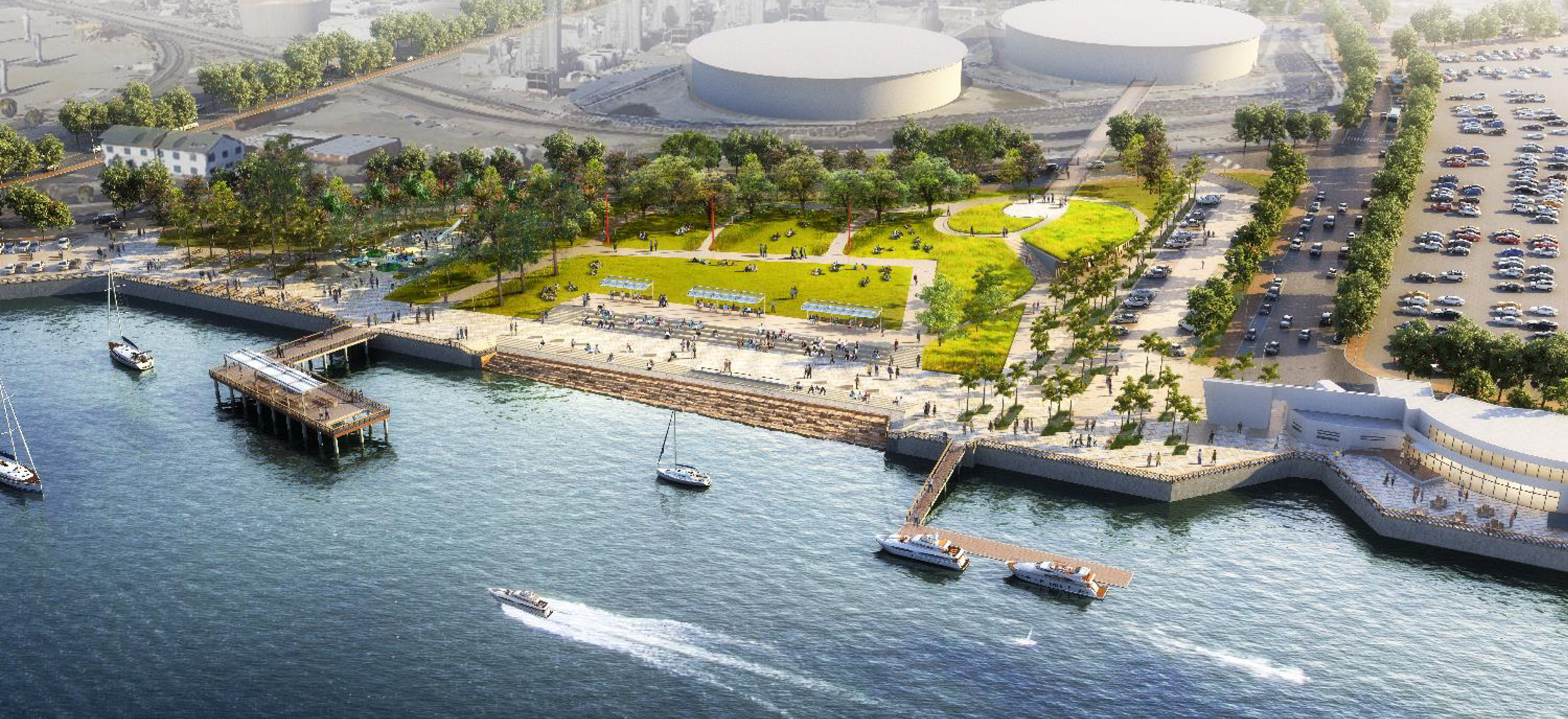The Los Angeles cruise ship terminal in San Pedro is a study in urban blight. The area features a sparkling new fountain, a few isolated new parks and a repainted but aging terminal surrounded by barbed wire fences, ugly, mismatched buildings, surface parking lots, and a lot of empty space. A competition among four local architecture firms was held last May to redesign the terminal and its bleak environs. But AN has learned that it was abandoned in favor of a less ambitious in-house redesign, angering the architects involved and dashing hopes of an area rebirth. Meanwhile, after a year of waiting, half of the teams claim they were never informed of the outcome.
|
[+ Click to enlarge.]
|
The RFP for the competition called for “conceptual design for a short-term (five to ten years) aesthetic improvement at the World Cruise Ship Terminal” as well as “additional programmatic elements that contribute to and/or enhance existing cruise terminal operations, community interaction, commercial viability, pedestrian and vehicular circulation, marketing concepts, and maintenance feasibility.”
Four architectural teams participated in the competition: Tetra Design, MVE Institutional, Anil Verma Associates, and TFO Architecture.
Instead of awarding the project to one of these firms, the port recently undertook an in-house $42 million facelift of the terminal that included cosmetic changes like repainting the terminal, adding a new $10.8 million, 71,500-square-foot solar array on its roof, installing new audio, video, and lighting systems, and adding new glass-enclosed gangways to boats.
According to port spokesperson Phillip Sanfield the decision not to choose any of the contestants was based on timing and economics. Disney decided to bring a new cruise ship to the port by early this year, so changes needed to be done fast, Sanfield said. And the port decided that the $10 million outlay for the competition was too small to make any major changes.
“Although we may reconsider design work in the future, that would be a decision made by the Los Angeles Harbor Commission,” said Sanfield in an email. “Presently there are no plans to do so.”
So the desolate area surrounding the terminal remains unchanged, and the architects are not happy about how it happened.
“You go there in the middle of the day and the fountain is going and the music is blaring, and there’s nobody there,” described William Taylor, an architect at TFO Architecture.
TFO’s scheme included a large green roof over a new parking lot that tied the cruise terminal to the surrounding neighborhood, but averted security concerns by keeping public access away from the cruise docks themselves. “What was really missing—and is still missing—was public space. A connection between the terminal and the waterfront,” explained Taylor.
Anil Verma Associates’ plan focused on knitting the neighborhood together with a series of play areas, an amphitheater, an exhibition zone and a linear park, all connected to public transportation.
Verma is particularly nonplussed with the port’s approach to the competition, whose $10 million outlay he describes as “a hoax.”
“That amount of money would barely pay for painting the terminal,” he said. “They’re just using us, and it’s kind of sad that they’re doing that in a down economy.” Verma and Taylor both explained that their firms spent more than four times the $10,000 competition stipends on their proposals.
Meanwhile two of the competition teams say they never heard anything from the port on the competition’s outcome. “We don’t know any more than you know,” said a Tetra Design spokesperson. “It was a little disappointing; there wasn’t a formal resolution to this. It just kind of went away,” added TFO’s Taylor.
The port says it informed all four of the teams that it would not select them in letters dated August 19, which the port provided to AN.
Meanwhile RFP cancellations—and the scrapping of public work in general— are much more prevalent in these trying times for public agencies.
“I think it’s one of the biggest challenges in the profession,” said Andrew Goldberg, Senior Director of Federal Relations at the AIA, of the recent abandonment of investment in public projects. The AIA is currently working on an initiative putting together a list of “Stalled Projects” to raise attention to the issue.
“People will just invest in what they have and get by,” said Russell A. Davidson, President of KG&D, a Mt. Kisco, New York firm that has had four county projects shelved recently. “They decide to replace a building, and then that project loses momentum and it becomes ‘let’s put a band aid on the existing facilities and let the next generation deal with it.’”








